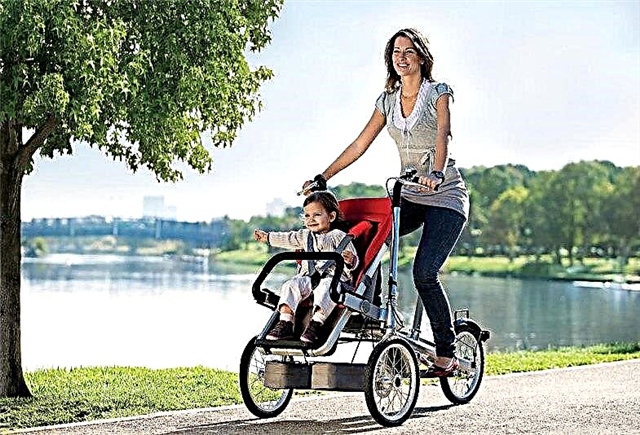Before babies begin to crawl and walk, they have other important stages of physical development that must be passed. For example, rolling over, lifting the head and neck. In fact, almost all infant “movements” begin with and are based on regular belly-laying.
Why lay a newborn baby on its tummy?
Babies should be active from birth. Laying the newborn on its stomach is a great way to get the baby to move and start building muscle strength.
Babies who are not often laid out on their belly may develop more slowly than children who do. This means that it may take a little longer for them to reach milestones such as rolling over, sitting or crawling.
By giving your child the opportunity to develop their muscles, you stimulate their development.
Benefits of laying on the stomach
Child development is a complex process. Pediatricians confirm that laying on the stomach is extremely beneficial for children.

- Lying on the stomach helps the child to strengthen his back and shoulders, and also gives him the opportunity to move his arms and legs in a different way.
- This allows you to develop motor skills that will help your baby roll over. When the child grows up, he will begin to try to escape from the position on his stomach and straighten his arms. It is a harbinger of crawling, which will strengthen the muscles and prepare them for walking.
- Lying on the stomach will also strengthen the baby's neck, which will give him more control over his head. This means that the baby will be able to look up and around him. If it is possible to see everything around him, the baby's coordination and his ability to follow objects with his eyes will develop.
- Babies have too soft skulls. For the first months, they mostly sleep on their backs. If you do not place the baby on its stomach, its head may be deformed. It is bad for his health.
- Also, lying on your stomach will prevent the appearance of an umbilical hernia.
- This exercise can reduce gas pain in your stomach.
- While lying on its tummy, the baby sees the world from a new angle. It's good for cognitive development. Using special methods (changing the surface on which the child is located, showing him a mirror), you turn the exercise into a game.
When can a newborn be placed on the tummy?
You can briefly spread the crumb on your stomach soon after birth.
But it is necessary to wait a while after returning from the maternity hospital, since the baby's umbilical wound has not yet healed.
Do not put your baby on tummy right after feeding. In the first months, the baby regularly regurgitates, and this position will further provoke regurgitation. In addition, the baby may choke.
The best time to put your baby on your stomach is when the baby is active and not too hungry.
Always supervise the baby while lying on his stomach and never put the baby to sleep on his stomach.
When the baby becomes stronger and more cheerful, he will begin to try to move his head. By the end of 3 months, the baby should be holding it and resting on the forearms.
How often is it necessary to lay the baby on the tummy
Pediatricians recommend that parents carry out "tummy games" 2 - 3 times a day for 3 - 5 minutes each time.
In early infancy, lying on the stomach can only last for a few minutes until the baby is tired.

Do not force a tired child to endure this situation. Instead, give him more frequent but shorter tummy sessions.
When your child is more interested in playing on his stomach, increase the time and frequency of the exercise. After 3 to 4 months, try laying it on your tummy for about 20 minutes a day. If your child is happy and alert, let him stay on his stomach for as long as he likes it, 40 to 60 minutes a day.
What to do if your child doesn't like spending time on his stomach?
Not every child likes to lie on their stomach. Some people just don't like it. At first, many children will be very uncomfortable, because being in such a position is hard work for a baby. This is normal. It's like training for adults. Many people feel uncomfortable at first.
Watch your child best. If he is just angry or irritable, this is normal. Screaming can also be the norm. A healthy child will cope with this sooner or later.
Watch closely and make sure the baby is not in pain. If the baby is in pain, he is too weak to lie on his stomach or does not get used to this position for a long time, consult a specialist. There may be another problem.
How to lay out the baby on the stomach?
1. Prepare the room.

Ventilate the area for 10 to 20 minutes before exercising.
Make sure the room temperature is normal and the child should not feel cold or hot.
Set aside any large soft items such as blankets, pillows, or toys. The child can see them and get scared.
2. Decide on a place.
The most convenient way is to do the exercises on the changing table or on the floor. It should be borne in mind that on a hard surface it is easier for children to learn to raise their head, because the load on the muscles is reduced. You should not do this on a soft surface or carpet because the baby will not feel comfortable.
If you have a gym ball, this is perfect.
3. Start exercising.
Place the child on the ball, holding the legs, and swing him back and forth. This exercise is also very helpful for colic.
A suitable ball can be used for this purpose only after the umbilical wound has completely healed.
In general, there is a huge variety of ball exercises, so you have the opportunity to diversify your activities. In addition, it will be unusual and exciting for a child.
Useful tips for children's whims
If your baby is naughty, here are some tips on how to lay your newborn on the tummy:
- put the baby on his stomach so he can see your face and listen to your voice. Lie on your stomach with the child or in front of him, distracting him with poetry and songs;
- put the baby on his knees with his tummy and massage his back;
- distract him with a toy or mirror. The child will be delighted;
- put the child on the bed and sit in front of him so that your heads are on the same level. This will allow the baby to see you - this is important to him;
- use interesting blankets on which you put your child. He will be interested in different textures and colors. Try to diversify the tactile sensations of the crumbs;
- you can put beads, ribbons and tinsel in a plastic bottle and shake it in front of your child to show how the pieces mix.
Try to make lying on your stomach part of your child's daily routine. If you put your baby on his tummy after changing a diaper or taking a short nap, he will wait this time, get used to this routine.
Don't let your child get bored while lying on your stomach. If the newborn is disobedient, discontinue the activity. Try to play with him, shake your hands or sing a song, and when he calms down, try again.
Lying on your stomach is a very important activity for a child, try to spend this time in a good mood. Make these moments cheerful, vivid and memorable for the baby, try to make him feel comfortable, distract and entertain him. The more the baby lies on his tummy, the faster he will learn to control his body and will start surprising with new successes.
Article rating:



